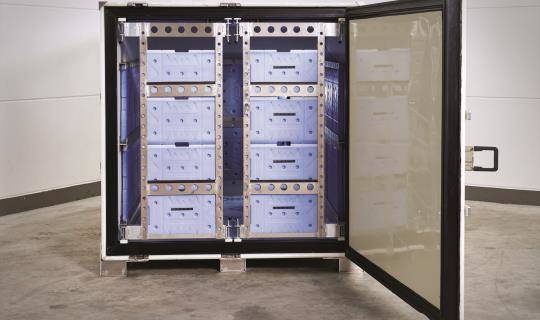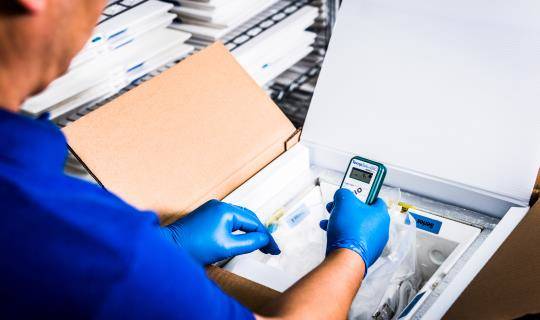Article: How to implement business continuity in sourcing and manufacturing logistics
By World Courier
Five Steps for Supply Chain Planning in a Dynamic Market
Logistics disruptions aren’t limited to 2020, and they’re not limited to public health crises.
There are the challenges that Brexit is introducing into supply chains. Consider too the transport restrictions resulting from natural disasters, like the 2010 eruptions of Eyjafjallajökull in Iceland and high impact hurricanes in North and Latin America.
We’ve also seen the significant impact of cyberattacks, as in the case of TNT’s part in a 2007 ransomware outbreak that cost them $300m. Changes in regulation in individual countries will play a part too .
Threats to business continuity include global events as well as regional and local crises. The context within which global supply chains operate is always subject to change. To accommodate dynamic market conditions, your risk management approach and contingency planning must be agile, flexible, and precise.
Here are five steps that manufacturers should take to optimize their supply chain planning in a dynamic market to ensure business continuity:
1. Ensure a Secondary Supply Source is in Place
Having both secondary and tertiary manufacturing partners in place helps to provide business continuity and mitigate a shortage of supply.
Pre-COVID-19, manufacturing of major generic APIs had been outsourced from Western Europe and the US to Asia (predominantly India and China) and Eastern Europe. Now with limited availability and forced lockdowns, the flaws in single-sourcing strategies are being exposed.
By diversifying supply chains, supply-side risks from any one country or region can be weathered, reducing the need to rely on any single supplier.
2. Shift Raw Material Production to Home Soil
API portfolios have become more complex, focused on targeted treatments for extremely rare conditions and degenerative diseases that require a specialty manufacturing process.
Coupled with the now clear overreliance on APIs sourced from Asia, the shift to outsourcing manufacturing to third-party production facilities in localized markets has accelerated.
More pharmaceutical companies are now adopting the services once provided by contract manufacturers themselves and creating standalone manufacturing facilities and supplies in local markets.
3. Cater to the Complexity of Transport Routes and the Need for Enhanced Temperature Control
Active-temperature controlled containers have always been viewed as the safest option for transporting higher value products including vaccines, large molecule APIs, and finished biological drugs.
There are however higher costs associated with this solution, as well as rental and return logistics to consider. The recent grounding of airlines and the release of ground handling staff has restricted both the handling and availability of active containers. Before the pandemic, passenger planes were carrying 55% of the world’s cargo. Now with fewer planes in the sky and space at a premium, this has affected both lead times and costs.
World Courier’s flexible solutions can cater to immediate and emergency needs, pivoting where necessary to meet product and transport requirements. The condition of packaging solutions can also be stress-tested through CORE labs to cater to detailed specifications.
In the early stages of the pandemic, World Courier implemented a bespoke approach for both packaging and temperature control. Due to limited aircraft space, it was essential to quickly pivot to use our 20 GTC 56L packages in place of the Cocoon 850 unit. To ensure product integrity, this required extensive preparation and cold room management.
4. Store More Product Closer to the Patient
Considering the decreasing shelf life of pharmaceutical products and APIs (just 48-72 hours in some instances), the importance of decentralized storage models is clear. But where once the just-in-time approach was the industry norm, storage strategy is now being re-examined within the context of differing market requirements.
For instance, in the midst of the pandemic, levels of Propofol (a general anesthetic often used for patients on ventilators) in Sweden were running extremely low.
World Courier, alongside AtrimusRX, was able to keep supply chains open between Sweden and Ukraine through charter flights from Kyiv to Stockholm, providing the essential medication to patients on ventilators in the Swedish capital. The limitations of the just-in-time approach were laid bare in this instance.
As we continue to experience ongoing disruption and travel restrictions, more pharmaceutical companies are purchasing greater stock than required to guarantee access if and when it is needed. In many cases, inventory levels are also increasing for manufacturing purposes.
5. Quickly Implement Alternative Transport Solutions
As the ongoing pandemic is disrupting standard supply chains, different routes, entry points, and transport methods are essential.
When disruption occurs, static supply chain models simply cannot cope, lacking the flexibility to evolve quickly and efficiently. In cases of extreme uncertainty, essential business continuity will be lost without robust planning and alternative solutions.
World Courier’s Approach to Contingency Planning: Mitigating the Impact to Business Disruption
Events in 2020 have further proven that greater supplier diversity, innovative logistics solutions, and secured supply of APIs are a fundamental necessity in the future supply chain. And in the face of potential future disruptions and uncertainty, their importance will only continue.
To ensure business continuity during unpredictable global and local events, World Courier uses a risk-based contingency planning system SOP which anticipates any potential adverse events, to:
- Identify risks and key business activities related to the storage of products
- Set preventative actions to mitigate these risks
- Evaluate the impact of the loss of key activities and assign priorities
- Outline actions to be taken in response to an incident to minimize disruption of service
- Take actions to recover from incidents as soon as possible
Crucially, we assist you to identify the key issues and find alternative solutions that ensure little to no impact across supply chains.
1 https://www.contractpharma.com/issues/2019-11-01/view_india-report/india-to-track-api-packs
Summary
At World Courier, our state-of-the-art storage facilities are strategically positioned in global markets. Purpose-built to adhere to specific storage needs we can respond with tailored storage solutions that fit your commercial supply chain requirements, whether ongoing or last-minute.
To find out more about World Courier’s approach to business continuity and risk mitigation within specialty drug supply chains, please get in touch.

Webinar on-demand
How to reshape your sourcing and manufacturing supply chain
Listen to World Courier’s take on the state of the sourcing and manufacturing logistics sector, with a specific focus on APIs, the impact of COVID-19 and how to overcome associated challenges — alongside an insight into how to secure the changing supply maps as a result.




